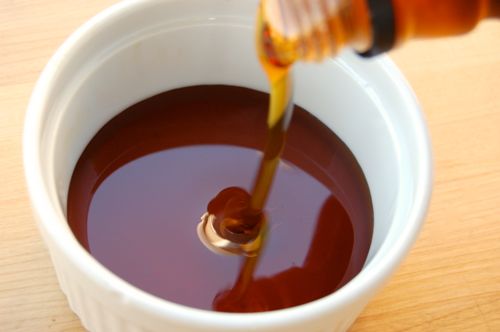Maple Syrup

Human beings around the world have harvested sweet tree saps for eons. Most of us in the Northern Hemisphere automatically think “maple” when we consider tree syrups, but in reality there are many other types of sap-giving trees. Birch trees, for example, which Alaskans and Scandinavians have long tapped for their sweet nectar. Hickory and elm trees also contain sap, though it’s less sweet and delivered in smaller quantities, so it takes more time and work to collect it and reduce it down to a syrup.
The process of making syrup from sap is a simple one: you simply boil it to evaporate off some of the moisture. Native Americans accomplished the task by heating rocks in a fire then — carefully — putting them in a bucket of sap. The process today is much the same in “sugar houses” on farms all around North America, only fire-heated cauldrons are usually employed.
Tree syrups are between 25% and 35% water, though more water is common since very dry maple syrup crystallizes easily due to all the sucrose it contains. As a general rule, you can assume a typical maple syrup is 2 parts sugar to 1 part water.
I love the real stuff. Can’t abide flavored pancake syrups. Grade B is the best with its deeper flavor and color. I always thought the whole process sounded magically when I would read books about it when I was growing up. Especially the part how the kids would be allowed to take some and pour it in the snow to make a quick candy treat.
I’ve heard of that as well. I’m game!
Cheers,
– Joe
Hey, Joe, don’t forget walnut syrup. Again, a lower sugar content, but a great taste if you don’t mind the extra boiling to get to it. And if you only reduce the sap to half the sugar content it should be at, it makes an amazing base for brewing tea or coffee.
Never knew that, Roxana! Thanks for rounding out the post for me! Cheers,
– Joe